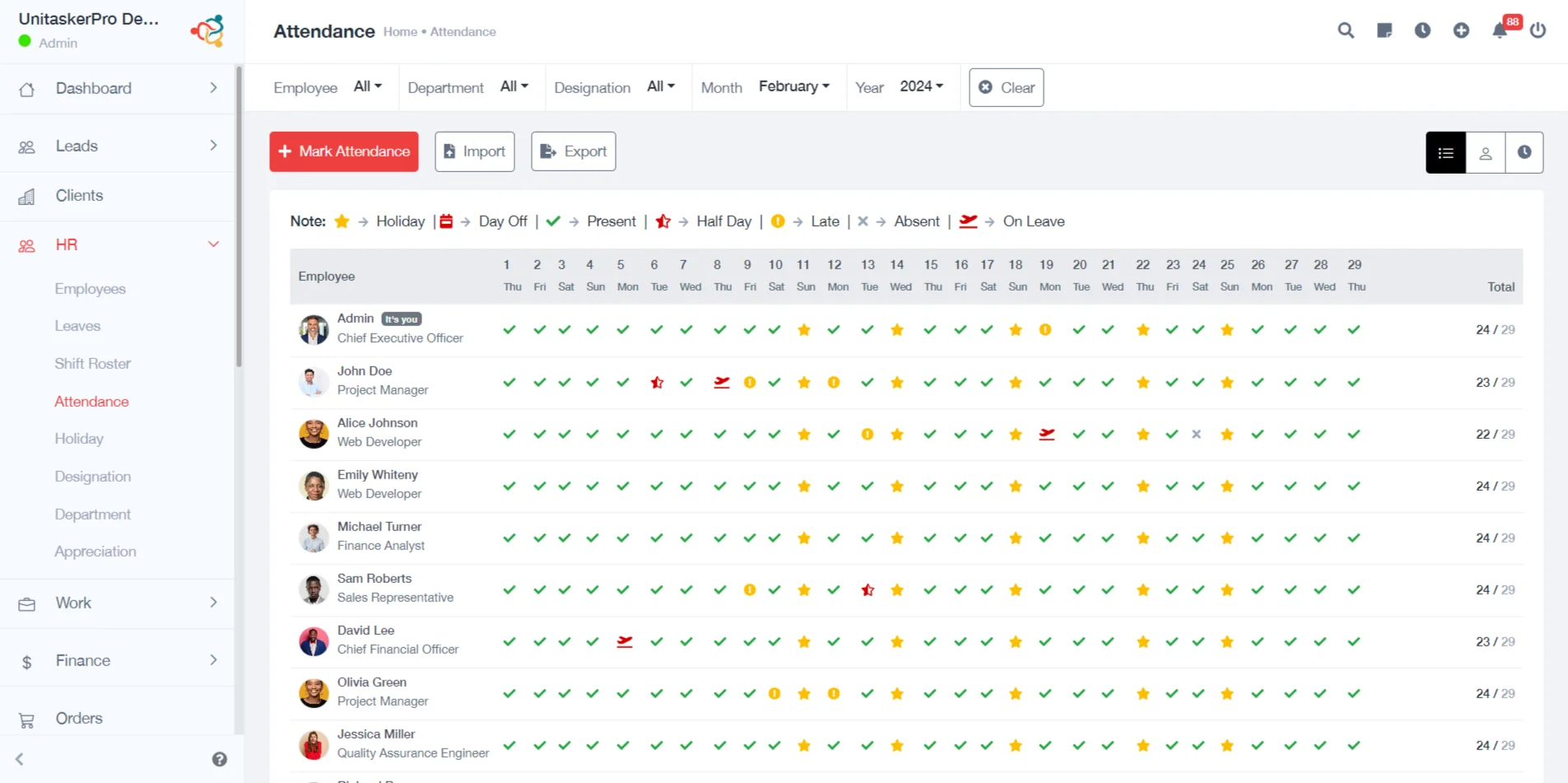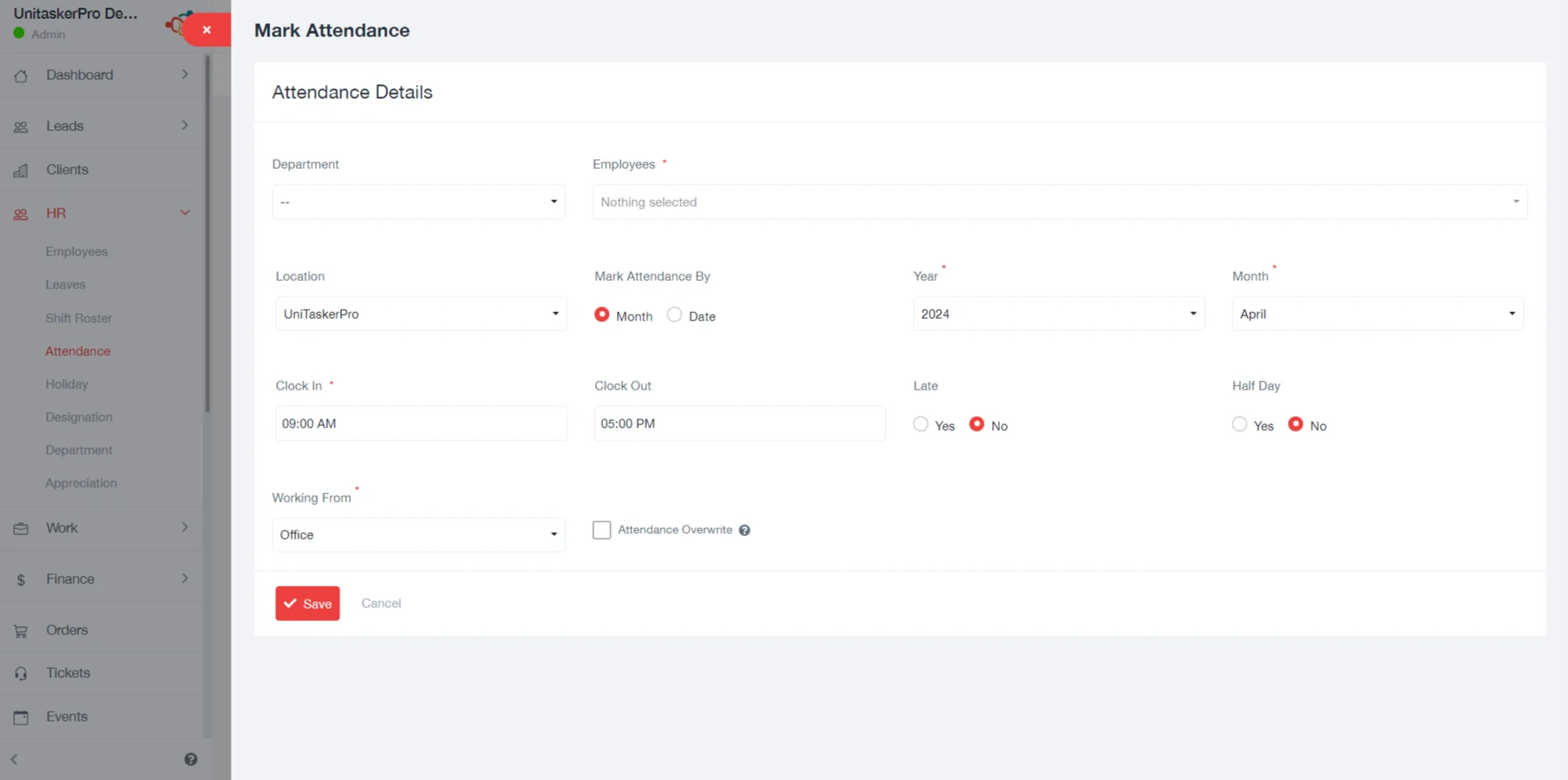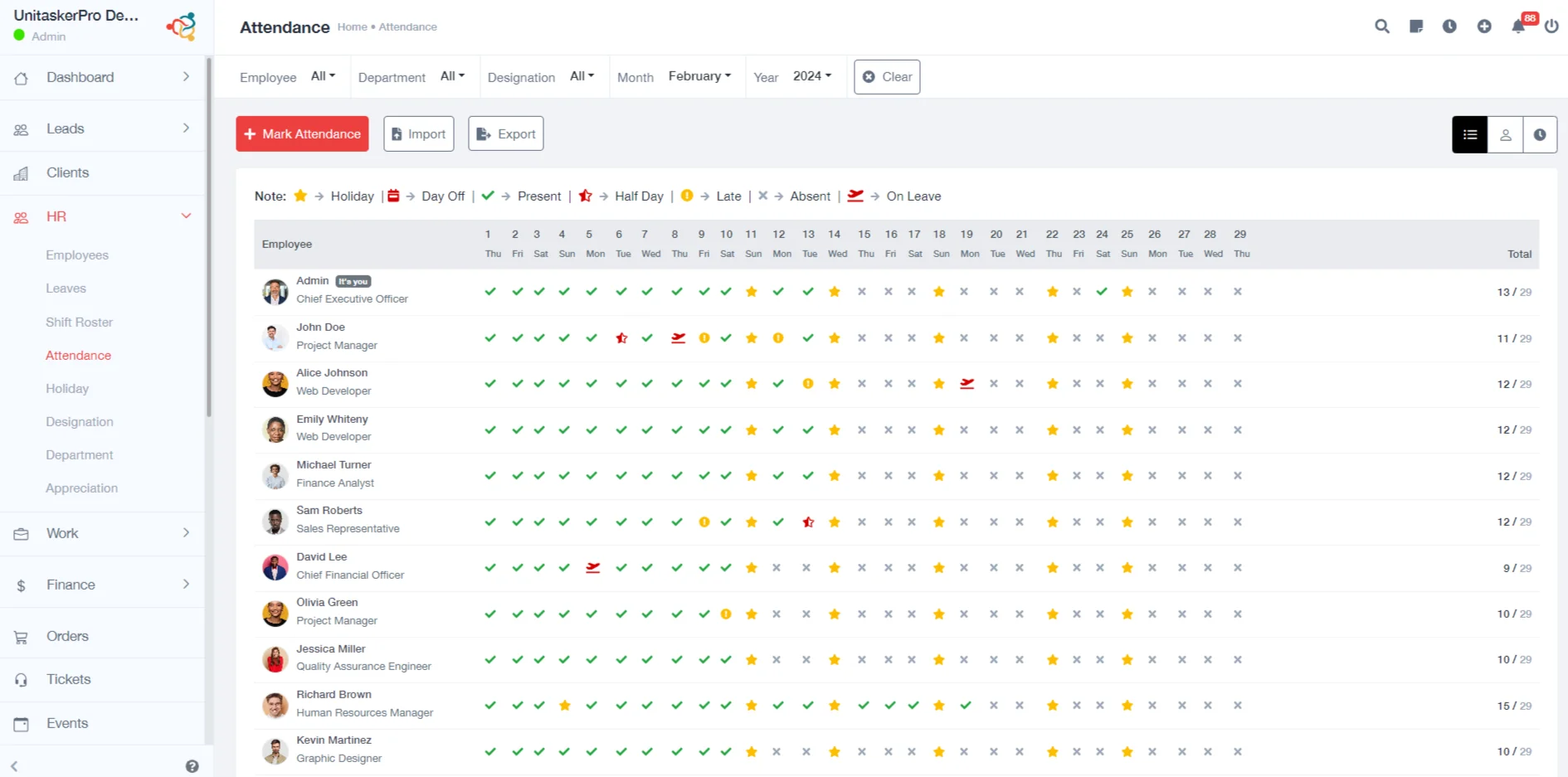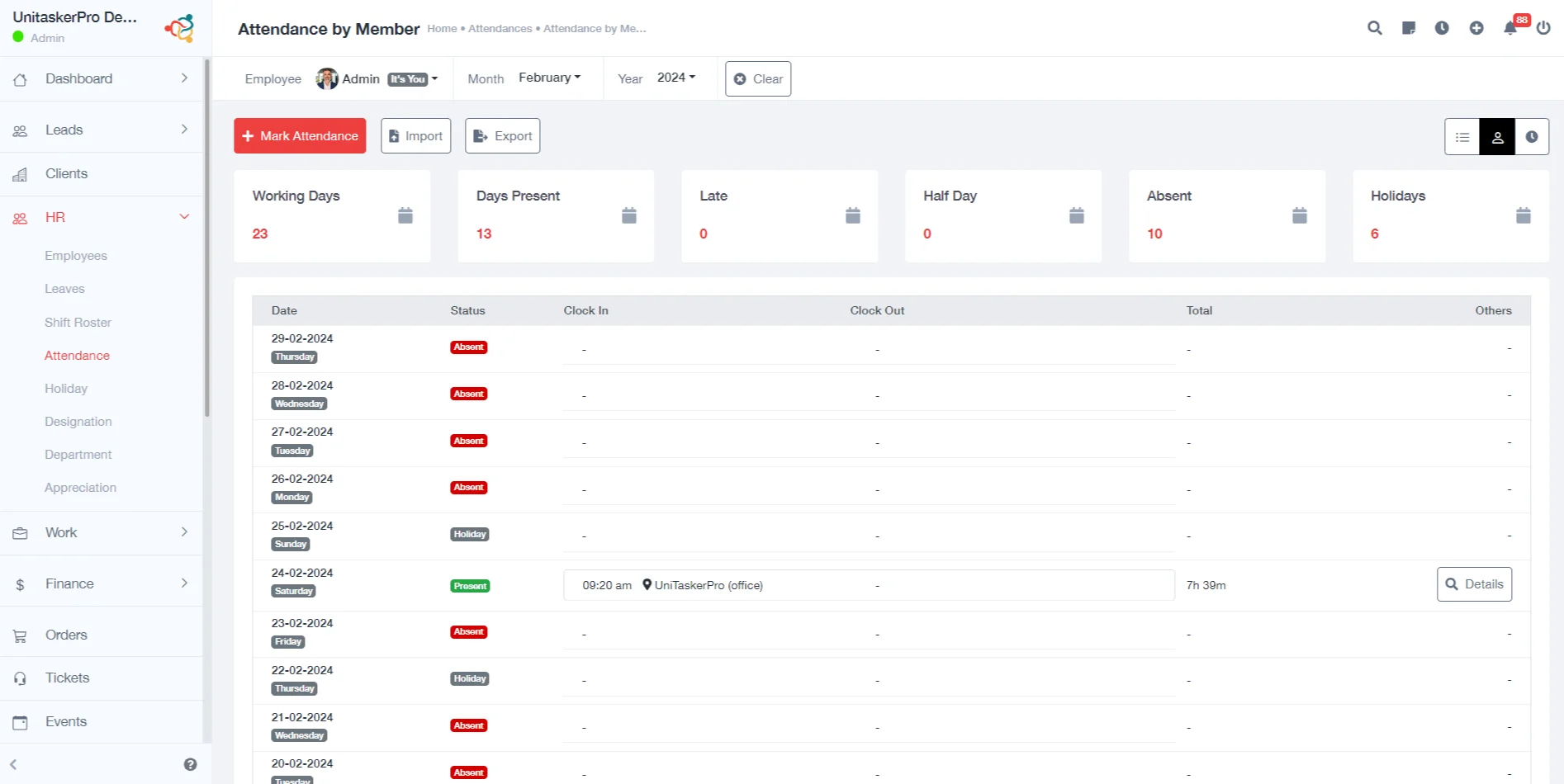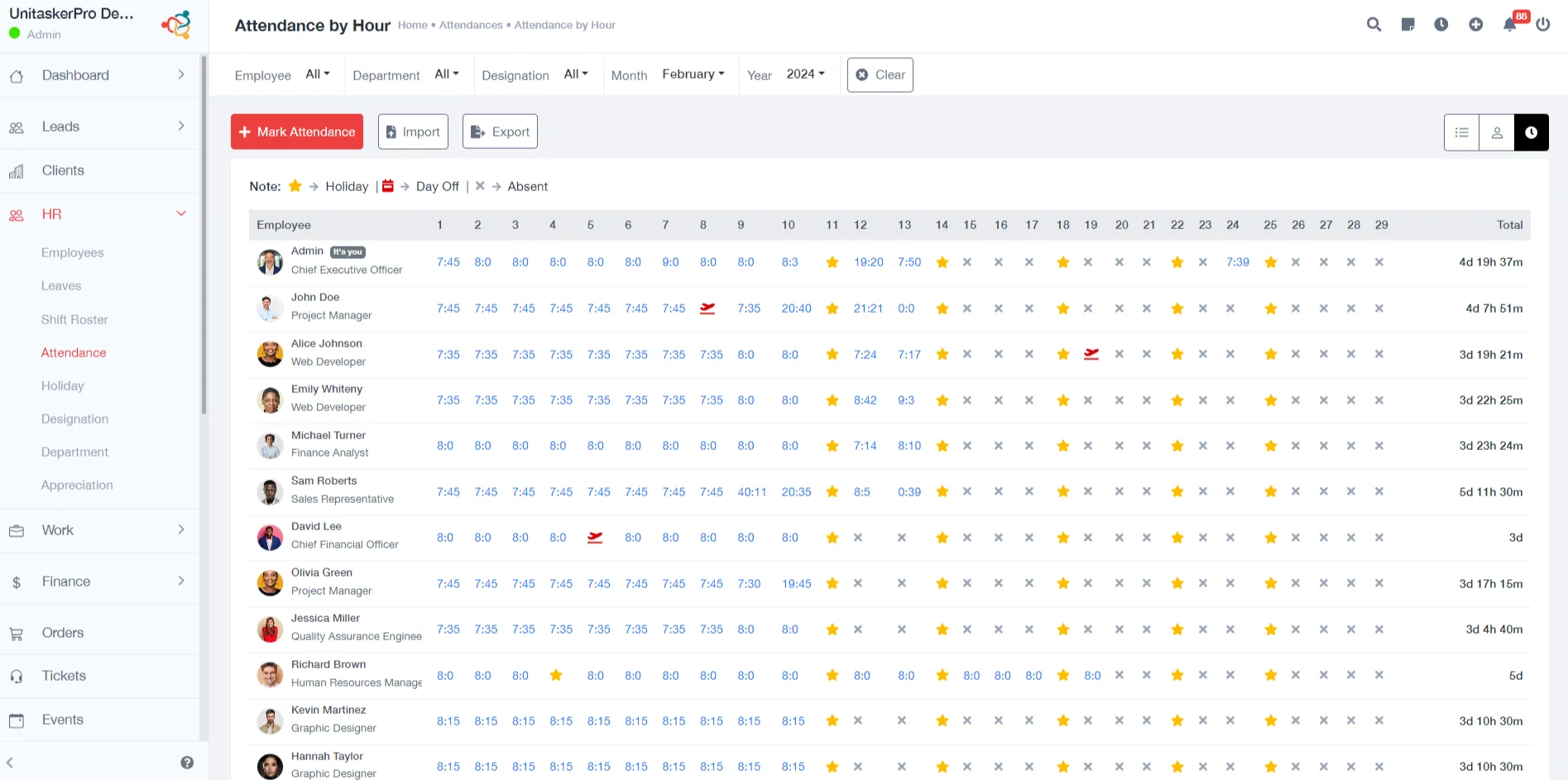Attendance
Attendance Tracking
This feature provides capabilities for recording and analyzing employee attendance, including time-in/time-out records and absenteeism reports.
Our system includes features for tracking and managing employee attendance:
- Marking Attendance:
Allows the user to record the presence or absence of individuals, typically for events, classes, or workplace shifts. This could be done manually or automatically through various methods like biometric scanners, ID swipes, or mobile check-ins. To manually mark attendance:
- Department: This parameter allows to categorization of attendance records based on organizational departments. This is useful for tracking and analyzing attendance within specific segments of the organization.
- Employees: The system likely requires selecting the name of the employee whose attendance is being recorded.
- Location: This refers to the physical location where the employee is working, such as an office, a branch, a site, or even a remote location. This is particularly relevant for organizations with multiple working locations.
- Mark Attendance By (Date or Month): This parameter indicates the method or criteria for marking attendance.
- Year and Month: These fields are for specifying the time period for which you’re marking attendance, ensuring that records are accurately dated and archived.
- Clock In and Clock Out: These are the times when the employee starts and ends their workday.
- Late: This parameter likely indicates whether the employee clocked in later than their scheduled start time.
- Half Day: This indicates whether the employee worked only a part of their scheduled hours on a given day.
- Working From UniTaskerPro has an indication of the employee’s working status, such as working from the office, from home, or from another remote location.
- Option to Overwrite Attendance: This feature suggests that the system allows for manual adjustments or corrections to attendance records, which is important for accommodating exceptions and errors.
2.Import and Export Functionality:
Provides the capability to import data from other systems (like HR systems or external databases) and export attendance data to formats like CSV, Excel, or PDF for further analysis or record-keeping.

